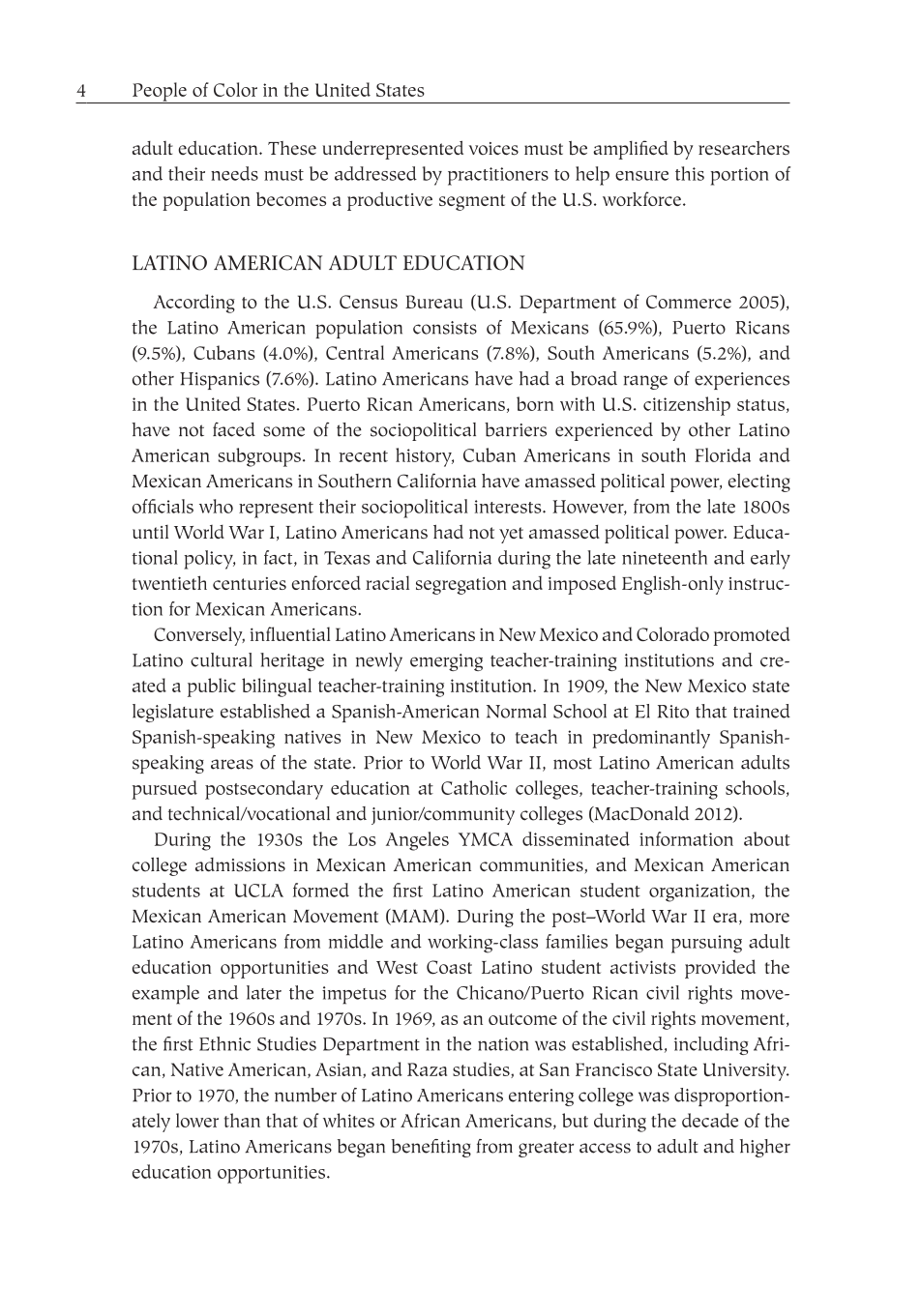People of Color in the United States 4
adult education. These underrepresented voices must be amplified by researchers
and their needs must be addressed by practitioners to help ensure this portion of
the population becomes a productive segment of the U.S. workforce.
LATINO AMERICAN ADULT EDUCATION
According to the U.S. Census Bureau (U.S. Department of Commerce 2005),
the Latino American population consists of Mexicans (65.9%), Puerto Ricans
(9.5%), Cubans (4.0%), Central Americans (7.8%), South Americans (5.2%), and
other Hispanics (7.6%). Latino Americans have had a broad range of experiences
in the United States. Puerto Rican Americans, born with U.S. citizenship status,
have not faced some of the sociopolitical barriers experienced by other Latino
American subgroups. In recent history, Cuban Americans in south Florida and
Mexican Americans in Southern California have amassed political power, electing
officials who represent their sociopolitical interests. However, from the late 1800s
until World War I, Latino Americans had not yet amassed political power. Educa-
tional policy, in fact, in Texas and California during the late nineteenth and early
twentieth centuries enforced racial segregation and imposed English-only instruc-
tion for Mexican Americans.
Conversely, influential Latino Americans in New Mexico and Colorado promoted
Latino cultural heritage in newly emerging teacher-training institutions and cre-
ated a public bilingual teacher-training institution. In 1909, the New Mexico state
legislature established a Spanish-American Normal School at El Rito that trained
Spanish-speaking natives in New Mexico to teach in predominantly Spanish-
speaking areas of the state. Prior to World War II, most Latino American adults
pursued postsecondary education at Catholic colleges, teacher-training schools,
and technical/vocational and junior/community colleges (MacDonald 2012).
During the 1930s the Los Angeles YMCA disseminated information about
college admissions in Mexican American communities, and Mexican American
students at UCLA formed the first Latino American student organization, the
Mexican American Movement (MAM). During the post–World War II era, more
Latino Americans from middle and working-class families began pursuing adult
education opportunities and West Coast Latino student activists provided the
example and later the impetus for the Chicano/Puerto Rican civil rights move-
ment of the 1960s and 1970s. In 1969, as an outcome of the civil rights movement,
the first Ethnic Studies Department in the nation was established, including Afri-
can, Native American, Asian, and Raza studies, at San Francisco State University.
Prior to 1970, the number of Latino Americans entering college was disproportion-
ately lower than that of whites or African Americans, but during the decade of the
1970s, Latino Americans began benefiting from greater access to adult and higher
education opportunities.



























































































































































































































































































































































































































































































































































































































































































































































































































































































































































































































































































































































































































































































































































































































































































































































































































































































































































































































































































































































































































































































































































